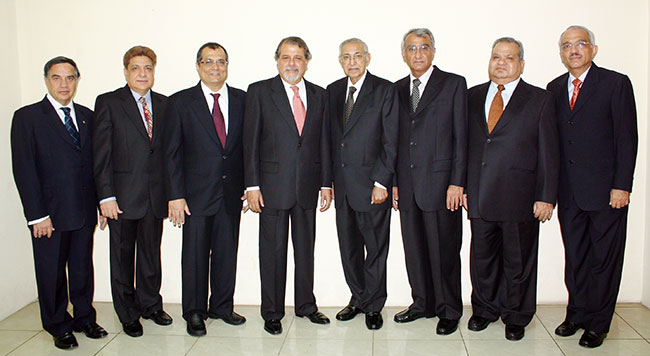
Economically, Sindhi families belong to the upper middle class. In the words of one respondent, “there are only rich and not-that-rich Sindhis”.
Maria Myutel
Although Sindhi traders established their first contacts with the archipelago in the late nineteenth century, the formative years of the Sindhi community in Indonesia fall in the 1950s when, following Partition, Hindu Sindhis were forced to turn their temporary residence into permanent settlement. Within a short time, the community established several institutions to preserve their distinct ethno-cultural identity. The Bombay Merchant Association, a business association exclusively for Sindhis, and Gandhi Memorial School with English as a medium of education and Hindi/Sindhi as elective subjects, played key roles in maintaining and strengthening Sindhi identity in Indonesia, in Jakarta in particular. Following an uneventful settlement, in the 1960s and 1970s Sindhis renounced their British India passports, obtained Indonesian citizenship, picked up spoken Indonesian and developed a love for Indonesian cuisine.
In the early 2010s there were no more than 10,000 Sindhis permanently residing in Indonesia, which makes them a tiny minority in a population of more than 250 million across the archipelago. Indonesian Sindhis remain Hindu with only a small number converting to Christianity. That means that Sindhis are a “double minority” in a largely Muslim population of Indonesia. The majority of Indonesian Sindhis (6,000–8,000) reside in Jakarta where they outnumber other communities of Indian descent, such as Sikhs and Tamils. Economically, Sindhi families belong to the upper middle class. In the words of one respondent, “there are only rich and not-that-rich Sindhis”.
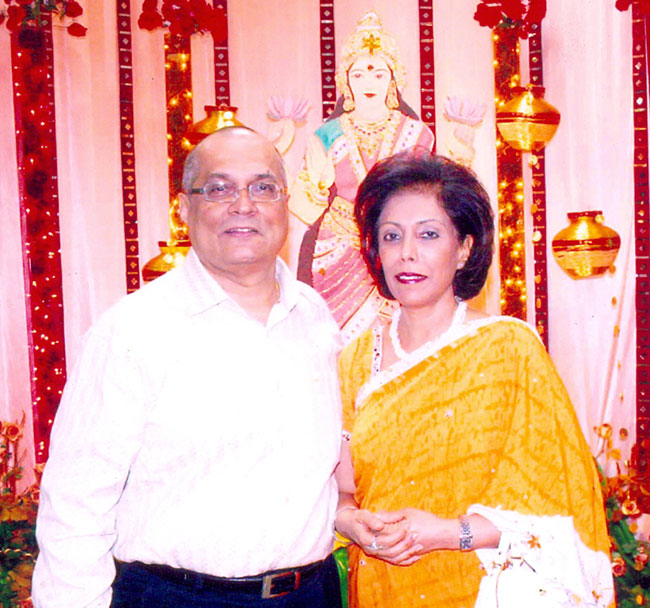
Raam Punjabi, the most famous Sindhi businessman and media magnate, was mentioned by Forbes magazine as one of the 150 richest Indonesians for several consecutive years. While most Indonesian Sindhis built their fortune in trade business specializing in textiles, several families branched out of the traditional business milieu and carved a niche for themselves in Indonesian media industries, first in cinema (since the 1950s) and later national television (since the 1990s). Sindhi producers are largely credited with the establishment and development of commercial soap opera production, one of the main industries of the Indonesian media landscape since the early 1990s. In other words, Sindhis played and continue to play a very large economic and cultural role in Indonesian media production, in particular popular entertainment. It should be mentioned that Sindhis are the only Indian Indonesians who are involved in media production. Other communities (Sikhs, Tamils, and Punjabis) are present in other sectors of the Indonesian economy.
***
The “New Order” regime, established by the army general Suharto, in contrast with the rule of his predecessor Sukarno, was the time when Sindhis grew socially and economically strong not only as individuals but, most importantly, as a community. Sindhi businesses, educational and religious institutions strengthened and prospered. At the same time, the community grew increasingly exclusive. Overall, my respondents from the Sindhi community had very good memories of the 1970s and 1980s.
The increased wealth and well-being of the Sindhi community under the New Order can be attributed to a number of factors, which had a lot to do with the overall improvement of the economic climate in Indonesia due to the privatization and liberalization of the economy and the oil boom. The laws of the late 1960s reversed Sukarno’s hostile policies towards foreign investors and private enterprises and gave incentives for the development of private businesses (Dick et al. 2002:206). For the Sindhi community, which, in Falzon’s words, is “synonymous with business”, the favorable economic conditions were among the main factors of community well-being. The growing economic opportunities encouraged Sindhis to apply for Indonesian citizenship. Most of the community members gave up their Indian passports in the period of unprecedented economic growth of Indonesia—in the 1970s. Those Sindhis who decided to retain their foreign passports were also able to do business in Indonesia: they moved from trade to textile manufacturing which was open to private, particularly foreign, investors to encourage exports.
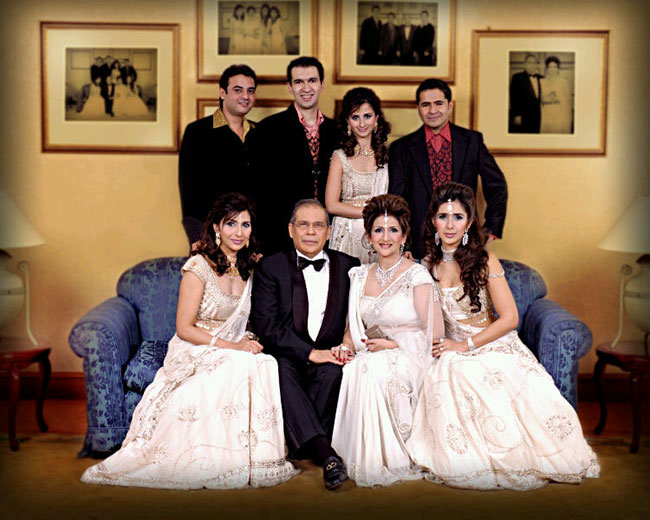
Films – the world of celluloid is a fantasy which some find inseparable from their daily life. Every frame of a film is reality for them. For many young people, movies have a huge influence on their lives. The world viewed as a running movie, makes their imagination scale heights of fantasy. No wonder from his early childhood days, Dhamoo Punjab of MD Entertainment in Jakarta, Indonesia, regardless of what vocation or work he was involved in, kept his mind focused on only one thing – how to become a part of the film world. Dhamoo was born on 10th November 1940 in Surabaya, Indonesia. Dhamoo’s father, Bhai Jethmal, passed away when Dhamoo was only sixteen. This placed responsibilities on him at a young age. Dealing in the family business of carpets and textiles, Dhamoo added a line of motorcycles made in Italy.
While most Indonesian Sindhis built their fortune in trade business specializing in textiles, several families branched out of the traditional business milieu and carved a niche for themselves in Indonesian media industries, first in cinema (since the 1950s) and later national television (since the 1990s).
India-Indonesia relationships played a significant role in increasing and securing the well-being of Sindhis in Indonesia during Suharto’s rule. On a practical level, Sindhis became the main facilitators of aid that India offered Indonesia immediately after the change of the regime in 1965. The aid was in the form of a substantial loan (US$100 million) in Indian goods like paper, chemical, steel, bicycle parts. According to H.M. Mahtani, one of the senior community members, the Indonesian officials did not know what to do with all these goods and approached Sindhi community members asking for help in marketing them.30 Indonesian officials turned to Sindhis because the latter were well known in the Jakartan elite circles for their ability to supply goods, which were difficult to obtain. As a result, Sindhis became the key contacts for businessmen from India, who wished to explore investment opportunities in the Southeast Asian region. By the early 1980s Indian companies had invested more than US$200 million to Indonesia. Most of those joint ventures were between Gujarati entrepreneurs from India and Sindhi businessmen in Indonesia.

At the level of international politics, and in the context of the Cold War in particular, the strategic position of India between two major powers, the USA and the USSR, was also favorable to the stable position of Sindhis, as well as other Indian migrants, in Indonesia. Mistreatment of the trading community which maintained close relationships with India would not have worked in favor of Indonesia and its position in the global arena. Although the relations between Indonesia and India during the late 1960s and the 1970s were not as amicable as back in the 1950s, it was in the interest of Indonesia to maintain neutrality with India. India was seen by the US and the USSR as an important player in the Cold War. In the 1970s when India’s political ideology and economic policies started to diverge significantly from that of Indonesia, drawing closer to the Soviet Union than the Western powers, Suharto, who had close connections with the Western bloc, did not escalate frictions with India. In words of Mastny (1996), during the Cold War Indonesia and India “created a model of mutually beneficial realpolitik”.
***
In daily life, Sindhis felt there was nothing wrong in retaining their Sindhiness while residing in Indonesia (Mani 1993a:122). Sindhis preserved their religious identity and made continuous efforts to keep Sindhi and Hindi as the main community languages. The business, educational, social and religious institutions established and patronized by the Sindhis grew strong during the New Order period. The Gandhi
Memorial School in Jakarta with English as the medium of education not only remained open during Suharto’s rule but grew significantly: from a small community school offering only primary-level education, it turned into one offering secondary and high school education, with an annual enrolment of more than 1500 students.
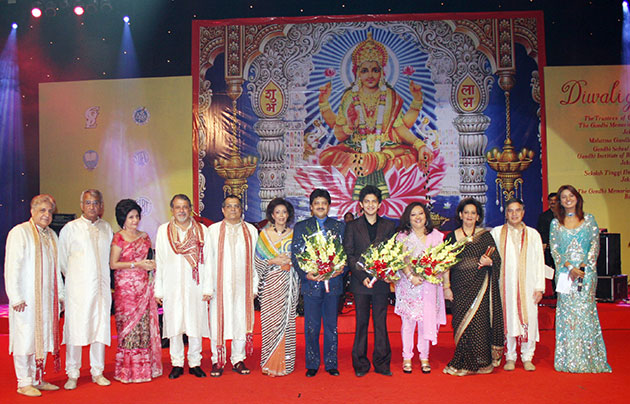
The cultural and religious life of Sindhis was vibrant, with festivals, cultural celebrations, and entertainment programs organized throughout the year.31 In Jakarta the celebrations usually took place on the Gandhi School premises, in temples, community hall (Graha Sindhu, acquired by community in 1973) or expensive hotel ballrooms, and were limited to the community members and Jakartan elites. These events were not open to the public at large, and were never taken to the streets. I would argue that the reason for its closed nature had to do more with the wish of the Sindhi community to keep their festivals and celebrations exclusive, than with restrictions on their cultural expressions. The fact that similar exclusiveness is maintained by Sindhis in other parts of the world, and was practiced in Indonesia until the early 2010s, long after the New Order regime collapsed, supports my argument.
As institutions reproducing Sindhi identity strengthened, the interaction of Indonesian Sindhis with non-Sindhis became more limited. If for business matters Sindhis continued to intermingle with non-Sindhi Indonesians, mostly Chinese Indonesians, in non-business spheres the interaction was minimized. From the 1960s most Sindhi children attended Gandhi Memorial School and thus stayed out of touch with the non-Sindhi and more broadly, the non-Indian Indonesian community. Women also generally limited their social circle to the Sindhi community. So since the late 1960s Sindhis grew increasingly exclusive towards all other ethno-cultural communities in Indonesia and focused on re-creating and maintaining the lifestyle of pre-Partition Sindh as they remembered and imagined it. They managed to preserve their lifestyle to such an extent that Sindhis from Hong Kong or Manila often referred to the Jakarta Sindhis as too conservative, inward looking, even “backward”.
Meanwhile, the attitude of non-Sindhi Indonesians towards Sindhis was also increasingly ambivalent. On the one hand, according to my Sindhi community respondents, Indonesians were friendly and accepting:

Quite curiously, during the New Order several Indian cultural festivals did get banned in Sumatra. A ban on the celebration of Thaiputsam, a Hindu festival celebrated mostly by the Tamil community, was imposed in Medan in 1973. According to Mani (1993b), the ban was, however, not the initiative of the state but requested by the Hindu Temple leaders themselves as they did not want to emphasize any cultural and religious differences and stood for total integration of Tamils into Indonesian society.
So when I first came here [from the Philippines] I was thinking—oh my God! They like Indians. I see movies on TV, I hear songs on the radio. Totally different world. There [in Philippines] people ignore you, look down on you… Here [in Indonesia] they respect us as human beings. (Rohini, Indonesian Sindhi, personal communication, 5 Mar. 2013)
This acceptance, however, had limits. Sindhis were accepted and welcome by Indonesians only as foreigners, not as locals. In everyday encounters Sindhis were constantly reminded of their differences with the local population through the “foreignizing gaze”: “Here [in Indonesia] it’s automatic—when people look at you, they look at you as you are a foreigner” (Reena, Indonesian Sindhi, personal communication, 6 Mar. 2013). Such treatment was, however, not much of a concern for Sindhis, who put a lot of effort into reproducing their differences. One of my respondents summarized her experience in the following way:
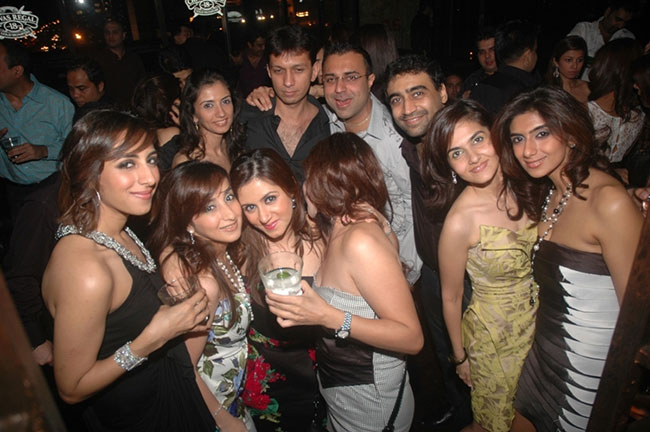
You know, everywhere I go I feel I am different but different in a good way…I feel I get more respect. People notice me more. I feel special. I don’t need to try hard to get attention. (Aditi, Indonesian Sindhi, personal communication, 30 Jan, 2013)
In other words, distancing was as much the result of Sindhi community efforts to preserve their cultural distinctiveness as it was the outcome of continuing racialization of Indonesian society. The legal and administrative practices of dividing people based on their skin color, language and other social characteristics, introduced by the colonial power to pursue political aims, were gradually incorporated into the everyday lives of common people. In daily interactions viewing and interpreting social reality through the prism of ethnic imagery became the norm.
(Excerpts from ‘Indians and National Television in Indonesia’– A thesis submitted for the degree of Doctor of Philosophy of The Australian National University- 2016)
________________
Photo Courtesy: Sindhi Shan Magazine